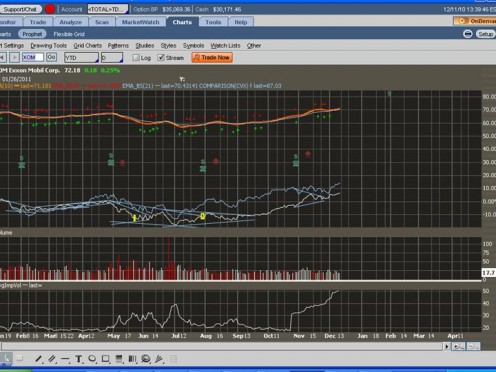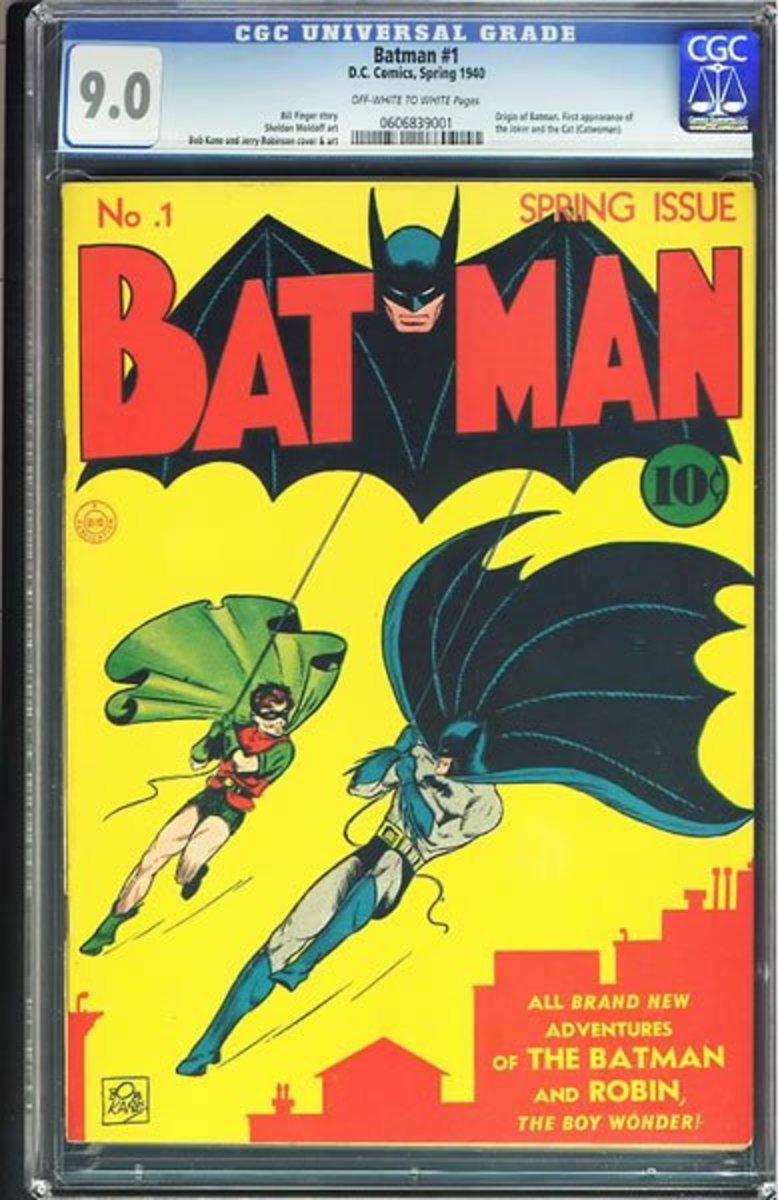Household Investment Techniques: How To Lower Your Investment Risk I - Risk Analysis and Management [25]
Winners Running, Cutting Losers
There is a saying in the investment world to "Let Your Winners Run and Cut Your Losers Short". This Hub talks about one of the techniques used in "Cutting your losers short", Money Management.
More specifically you might call it Money Risk Management because what you are doing is managing the risk of both your total portfolio and each individual investment. Money management, i.e., risk mitigation, must be one part of your integrated investment plan; a very important part.
There are three risk areas regarding adding investments to your portfolio.
- How much of your total portfolio do you want to risk on the investment you are considering?
- How much are you willing to lose on this single investment?
- What is the largest percentage of your portfolio are willing to have invested in any one investment
Now, before I go any further, let me say that I am neither a stockbroker, certified financial adviser, or any other financial professional. While I will be offering information about investing, I won't be offering any advice about specific investments. Having said that, I have had training through courses provided by TDAmeritrade and their subsidiary Investools, both of whom, if I am allowed, I highly recommend. What I offer in this and other hubs is what I have learned from this training plus the experience I have gained in trying to apply what I have been taught.
The values you chose when answering these questions depends upon the type of investments, e.g. buying stocks long, selling stocks short, options, commodities, etc, you are interested in. I like to trade options, but you may like to trade stocks. The risk profile of each trading style is very different, therefore I would chose different values for my calculations than you would.
I will discuss and provide examples for each risk area separately and then put them together in the last section.
Portfolio Risk
PORTFOLIO RISK IS ONE OF THE AREAS YOU NEED TO DEFINE before you make any investment. Its concept is simple, how much of your total portfolio are you willing to lose on this single investment you are considering ? $100?, $1000?, 1%?, 10%? Should you use a fixed dollar amount or a percentage of your portfolio? These are all decisions you need to make before investing in anything. Once made, you should stick with your decisions and not be changing them from trade to trade.
[For the rest of the examples in this section and the ones to follow, let us assume we are strictly dealing in buying and selling stocks and that your total portfolio is $10,000 of which $5,000 is in cash and the rest is in stock you already own.]
I hate to say it, but since we are working with risk and money management, by necessity we also have to work with formulas and numbers. Fortunately, they aren't to complex and you can reduce them all to a spreadsheet. So, what do we need to consider to determine our Portfolio Risk (Rp)? We need to consider Dollar Risk (Dr) and Total Portfolio Value (Pv)
At this point in time, we only have information about one of them, Pv which is $10,000. All you need to do is figure out how much of your $10,000 you want to risk on any given trade. This can be in terms of either Dollar Risk (Dr), e.g., $400 or go directly to Portfolio Risk (Rp), e.g., 4% The relationship between these three factors is Dr/Pv=Rp; with numbers this would be $400/$10,000 = 4%. This means your Rp is 4%. The rule of thumb is to limit your Rp to 1% to 5% of your total Pv.
I would recommend that regardless of whether you prefer thinking in terms of percentage of portfolio or not, that you make sure you know the Dr, dollar risk, you are working with in order to ensure you are comfortable with losing that amount of money on one trade given the size of your portfolio. Once you are satisfied that you can live with that size of loss, then it is best to stick with thinking of your risk in terms of percentages. The reason for this is in using percentages as your baseline, you maximize your gains and minimize your losses as your portfolio grows or shrinks during a session of trading.
Now, having established your Rp, Portfolio Risk, you are ready to move on to the next step.
Trade Risk
THE NEXT STEP IS TO DETERMINE YOUR TRADE RISK, Rt. The is a basic rule in investing - "Know when to get out". It is just like the old song "You know when to hold them and you know when to fold them ..." Trade Risk is all about knowing when to fold them. I can't tell you how important it is to follow this rule ... well actually I can, for each time I broke it and got burned, in some cases badly, I am sorry to say. It has finally sunk in that I really don't know better and I always put in an order to get out of my position at some predetermined point.
In the simplest of terms, if you buy a stock at $50 and you have a rule to get out if the stock falls 10%, then you put in something called a Stop order to sell at $45. That way you won't lose more that $5 per share. Guess what that $5 per share is? That is right, that is your Rt or Trade Risk; you are willing to risk $5 per share on this trade.
With my example, I just gave you the three parts to Trade Risk.
- Stock Price - Sp ($50)
- The percentage of Sp you are willing to lose before getting out of the investment, S% (10%)
- Trade Risk, Rt
- The relationship between the three parts is S% * Sp = Rt or 10% * $50 = $5
With this in mind, we can combine Rt with Rp to come up with how many shares of stock (or how many option contracts) to buy; also known as Position Sizing.
Position Sizing
POSITION SIZING IS THE FINAL STEP IN THIS RISK ABATEMENT process. This last calculation results in how many units of what you are investing in you are going to buy to meet your risk objectives.
What you need for this calculation are the following:
- Your Portfolio Risk, Rp
- Your Trade Risk, Rt
- Your unit price, Sp, at the moment you purchase the investment
- Your Portfolio value, Pv, at the moment you purchase the investment
Let us assume the following then for the purchase of Stock XYZ:
- Pv = $15,000
- Rp = our previously calculated 4%
- Sp of XYZ = $100
- Rt = based on some measure of volatility we chose is $10
In words, this says that we are willing to risk 4% of our portfolio value or Dr = $600 ($15,000 x 4%) to purchase XYZ stock for $100 and will sell if it drops below $90 ($100 - $10). Rt, $10, is the loss per share we are willing to except on this particular investment.
So, what is the maximum number of shares of XYZ can we need to buy to stay within our risk tolerance? It is Dr/Rt = $600/$10 = 60 shares.
An Additional Consideration: Eggs and Baskets
FIRST, let me finish the example from the previous section. Before you can buy your stock or other investment, you must make one final check. Determine that you actually have enough cash-on-hand or borrowing power (margin) to make the purchase. You have to consider other things if you short stocks or are trading options but your experience level should be a lot higher before considering that kind of trading.
One final thing to consider that you can add to your calculations which would lower your position size is avoiding putting all of your eggs in one basket. If you have $10,000 in your portfolio and $1,000 is tied up in Exxon-Mobile. You might want to reconsider buying $1,000 of British Petroleum even though your position sizing and risk tolerances says it is OK. The reason is that both stocks represents companies in the oil industry. That means those stock are probably highly correlated; they track each other's performance pretty closely (see the two light blue lines at the bottom of the top chart in the figure below). That, in turn, means owning 100 shares of each is sort of like owning 200 shares of one.
What you must consider is do you want to have 20%, in this case, of your portfolio tied up in oil stocks? Many people use a rule-of-thumb of 10% but again, it is a personal choice and your personal calculation of your tolerance to risk.

Wrapping it Up: Have a Plan and Stick To It
"HAVE a plan and stick to it."You will hear that phrase or something like it over and over and over again. Even today, when I get lazy and don't stick to my plan, guess what, I don't just get stuck, I get gored! I always wondered why women keep having babies after the first one, especially if it wasn't an easy birth. Well, apparently they forget the pain of the birth and remember the love of the child just as easily as I forget the pain of the loss and the excitement of charting my own course. I keep deviating from my plan and shortly thereafter find out why I shouldn't have. Have a plan and stick to it!
Good money management is critical to any investment plan. It guarantees that when things don't go your way, even several times in a row (and they will), you won't be wiped out. You will always have a portfolio to invest with. So, in a nutshell:
- Determine how much, in dollars, of your current portfolio, Dv, you are willing to lose in any one investment, Dr
- Convert that to a percentage. Rp, Portfolio Risk
- When you decide to invest, based on some method (I will have a hub on this in the future) you feel comfortable with, decide how many dollars per unit you are willing to lose on a given investment, Rt, Trade Risk
- Using the price of the investment Sp, the value of your portfolio, Dv, and the trade risk, Rt, at the time of the investment along with the portfolio risk, Rp, calculate your position size.
- Make sure you have enough cash or margin to afford the purchase
- Make sure you are comfortable with whatever the resulting percentage of your portfolio will be for that particular investment or the investment's industry.
If anything I wrote is confusing, please let me know in a comment or message and I will attempt to clear it up. Other than that, Happy Investing.
Related Links
- Household Investment Technique III: Rebalancing The Pyramid - Why Is It Important?
Contrary to popular opinion, even among financial advisors, "buy-and-hold" is rarely a good strategy. This Hub digs into why that is so. - Household Investment Technique II: The Personal Pyra...
This hub adds a twist to the original suggestion on how to distribute your resources among investment types to maximize your chances for growth while minimizing your risk. This pyramid adds in protection in case there is hyperinflation or great econo - Household Investment Techniques: The Pyramid I
YOU need a plan. You need a plan. I say again. you need a plan and you need to stick to it. I bet you have seen that a million times if you have been hubbing through sites that talk about successful investing....
© 2010 Scott Belford








